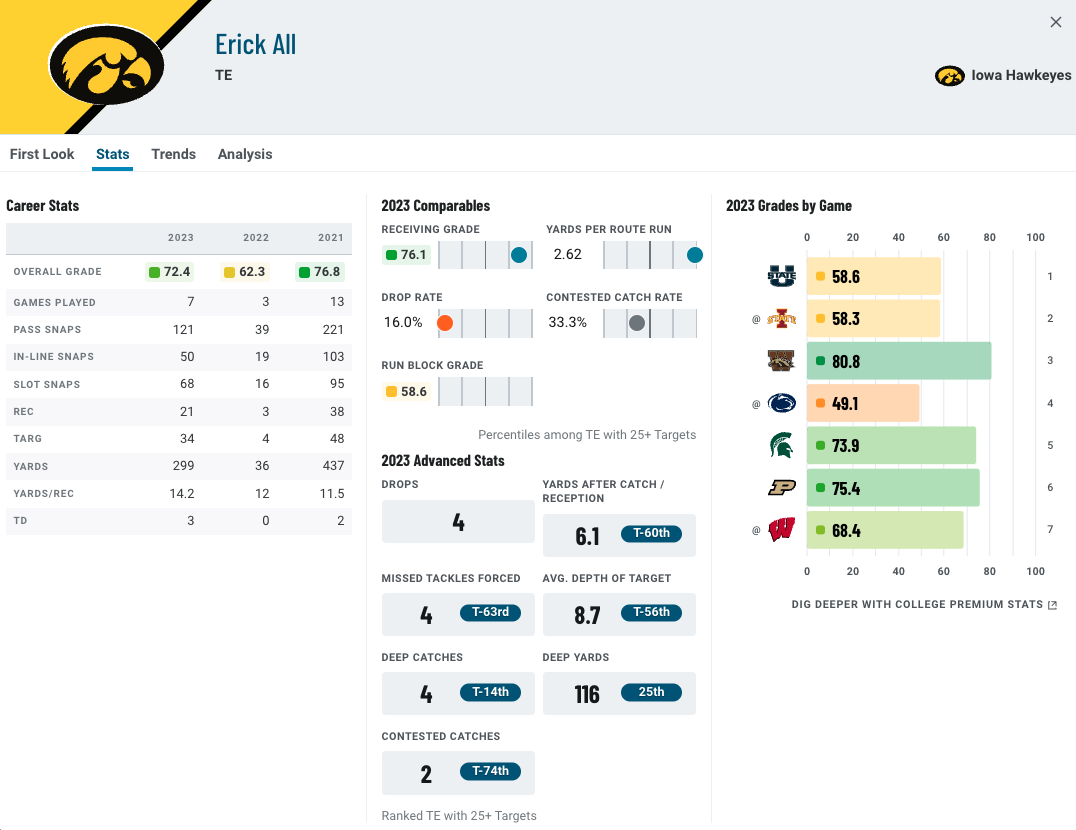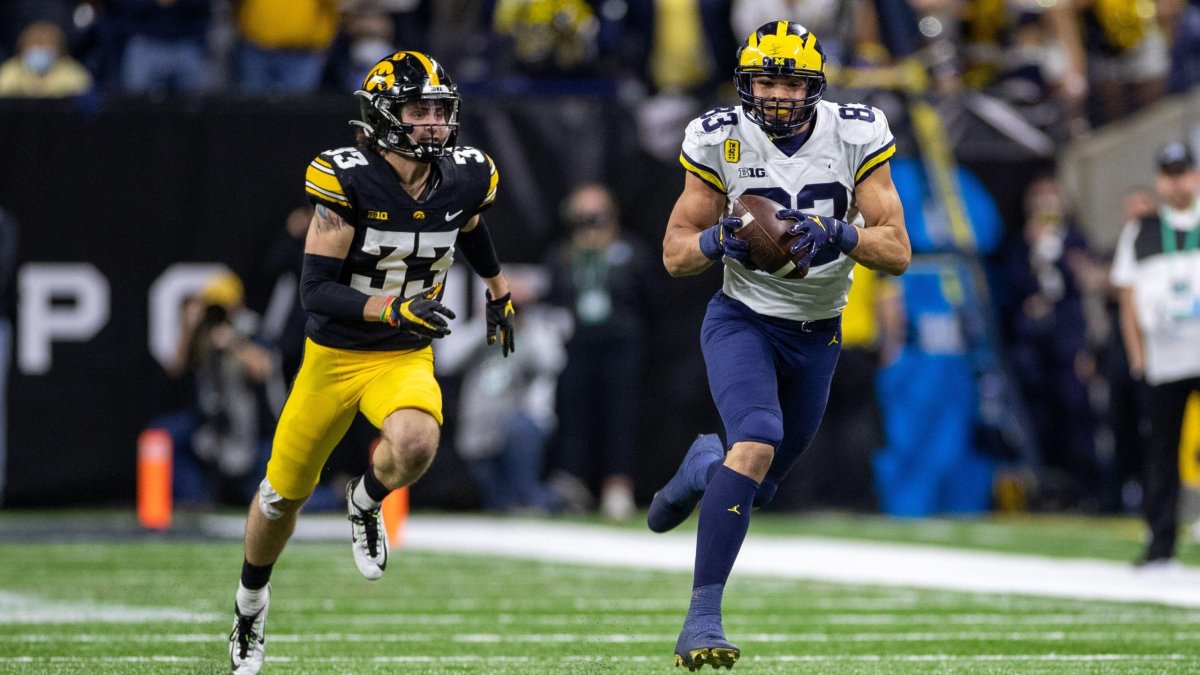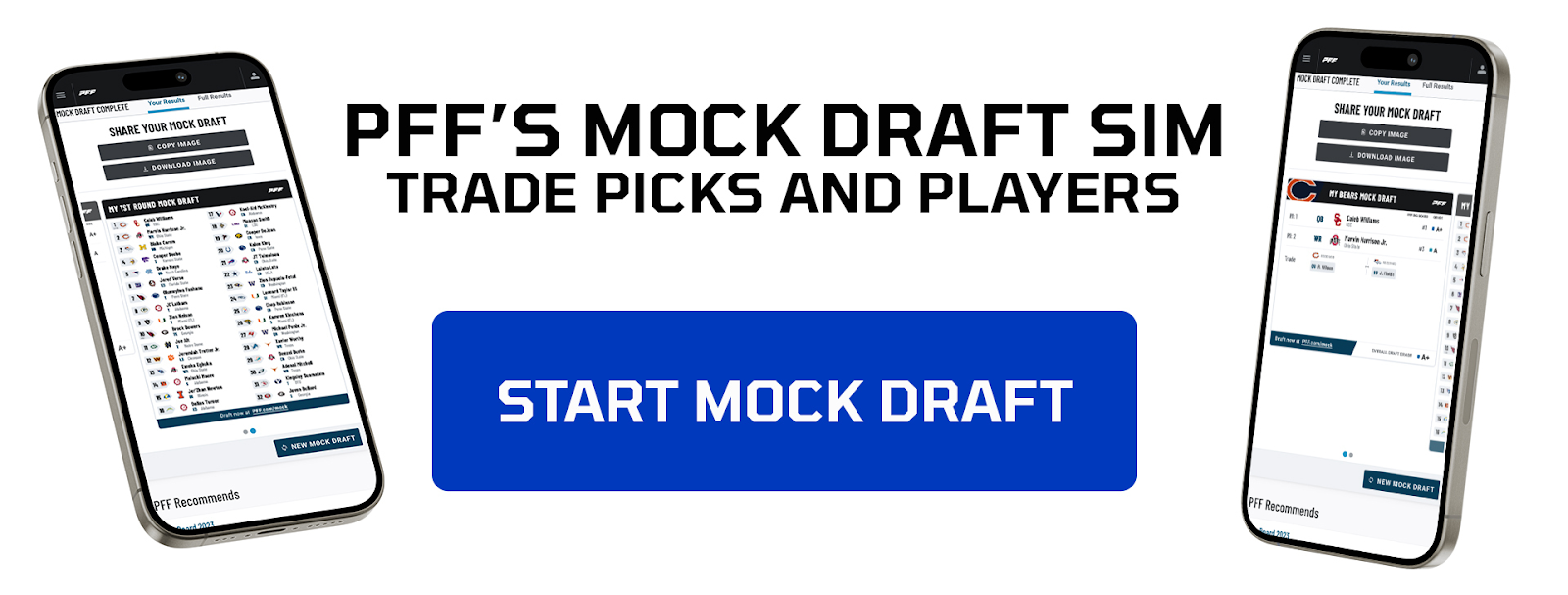The 2024 NFL Draft is fast approaching. The PFF big board is live, mock draft season is in full swing and the 2024 NFL Scouting Combine has wrapped up.
This year’s tight end class is led by Brock Bowers, one of the most productive college tight ends we’ve ever graded. Bowers should be a top-10 pick, but after that, there’s a decent gap between him and TE2. Ja'Tavion Sanders and Erick All could be called in the second round, and players such as Cade Stover and Ben Sinnott could be solid depth options for the middle rounds.
Let's look at Iowa‘s Erick All, who spent four years at Michigan before transferring to Iowa in 2023.
Click here for more draft tools:
2024 Mock Draft Simulator | 2024 Big Board | 2024 Draft Guide
2024 Player Profiles | 2024 Mock Drafts | NCAA Premium Stats
SCOUTING SUMMARY
All is a very solid all-around tight end prospect who shows NFL potential as a blocker and receiver. He is a willing move blocker who is often detached from the line of scrimmage to lead, get to the second level or perform split-zone blocking responsibilities.
You can tell his knowledge of blocking fundamentals and hand usage is there, though he could sometimes show more of a finisher’s mentality. He has a good understanding of both leverage and angles to wall off defenders without holding.
As a receiver, he has big hands to be reliable at the catch point, though he has had frustrating drops over the years. He is a better athlete than he seems to be getting credit for and can run routes with pace and confidence. His underrated change-of-direction fluidity yielded very high separation scores in 2023. He also showcases good balance for yards after the catch and contact.

WINS ABOVE AVERAGE
WAA represents the number of wins a player is worth over an average college football player and is a metric that evaluators can utilize to assess performance. It combines how well a player performed in each facet of play (using PFF grades) and how valuable each facet is to winning football games.
The result is a first-of-its-kind metric that allows for cross-positional valuation and predicts future value at the player and team levels.
HOW ALL RANKS IN THE STABLE METRICS
Receiving grades are relatively stable from year to year, but there is always some level of dependency on quarterback play when evaluating receivers. Isolating receivers against single coverage versus zone is informative, as it shows how much was earned in one-on-one situations compared to more scheme-driven production. Advanced data shows how open receivers are on their targeted routes, and separation percentage is one way to isolate the receiver away from his quarterback.
As far as advanced stats go, yards per route run (YPRR) is one of the best measures of a wide receiver’s production, as it takes into account how well he takes advantage of his opportunities. Average depth of target (aDOT) and yards after the catch per reception are informative about a receiver’s usage pattern, and his after-the-catch expectations are directly affected by how far down the field he is targeted. Both numbers are as much about style as they are about production.
In the run game, positively graded blocks are more stable than negatives from season to season.
The 6-foot-4, 252-pound Iowa standout looks like your traditional in-line tight end. He was used primarily as a run-blocker and an underneath target (66% of his targets came between 0 and 9 yards downfield), and he was solid in both roles.
He won’t provide much juice downfield, but he has enough to create separation and provide value after the catch. He was charted as open on 80% of his targets and averaged 5.9 yards after the catch per reception, both solid marks.
BOTTOM LINE FROM PFF's 2024 NFL DRAFT GUIDE
All could use a bit more nastiness in his game as a receiver and blocker, but this is a player with a versatile, contributing skill set who projects as a TE2 at the next level as long as he can stay healthy.





 © 2025 PFF - all rights reserved.
© 2025 PFF - all rights reserved.